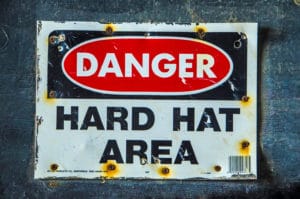Warehouse Safety Precautions for Businesses
Warehouse floors are busy each day, so safety is beyond important. From operating ride-on machinery to heavy lifting, each person on the shop floor has to be on top of things. We’ve rounded up a few warehouse safety precautions for businesses to take each day to streamline operations.
Use Safety Equipment
Anyone who works in a warehouse environment knows how unpredictable it can be, making safety equipment necessary. That means each team member should gear up in all the essentials, like safety glasses, gloves, reflective jackets and hard hats. These pieces of equipment will protect your body and increase visibility (for both you and those around you), keeping you safe.
But safety equipment isn’t restricted to what you wear. It also includes the tools you use to perform tasks and systems in place at your location. If you’ll be doing heavy lifting, be sure to use a forklift or hydraulic dolly for both efficiency and to avoid muscle strain.
As for warehouse safety precautions, make sure safety systems are in place and accessible to everyone. This means sprinkler systems and alarms should be functional and emergency exits should be unobstructed and clearly labeled for team members to access in case of emergency.
Be Aware of Hazardous Conditions
Even small hazards present risks to workers. Dropped a pen? Don’t forget to pick it up. Warehouse workers should be mindful of the risks that improperly-stored and stowed items present and do their best to avoid creating harmful conditions.
You can probably think of a few hazards off the top of your head, like wires and cords, small pieces of equipment, discarded materials and more. Be sure to tuck wires safely away to avoid trip and fall incidents, and throw away any garbage.
Has something spilled or is there a damaged area on the floor? All team members should be aware of these issues, too, by using appropriate cautionary signage or taping off the area. In matters of simple spills, the mess should be cleaned as soon as possible to reduce risks.
Of course, if there are cracks, divots or other damage in the floor, these also cause trip and fall risks and potential damage to machinery. Have the pros fix it in no time.
Make Cleanliness a Priority
A clean warehouse is a safer one. Each team member should clean up messes as they occur to streamline operations and to minimize risks. This could be as simple as cleaning up debris on an assembly line, sweeping the floor or putting hazardous materials and tools back where they belong.
It’s important to carry out safety protocols when cleaning up. Hazardous tools should be promptly removed from the warehouse floor after use to avoid trip and fall risks and stored in a specified area, and any dangerous materials or chemicals should be securely locked away to prevent spills. Along the way, ensure that only qualified personnel handle these items to further avoid risk.
Exercise Awareness and Communication
Accidents happen when your attention wanders or project needs aren’t conveyed properly. That’s why it’s so important to be aware of your surroundings in a warehouse environment and communicate clearly with your colleagues when you’re completing a task.
Think of it this way: if you’re walking across the shop floor talking to a colleague and into the path of a forklift, awareness will go a long way toward ensuring your safety and the operator’s safety. Or perhaps you’re the one moving heavy materials overhead. Whatever the case, make a habit of communicating, even if it’s a simple “Down below!” or “Coming through!” This will go a long way toward avoiding mishaps during hazardous tasks.
Conduct Regular Training
Once your team has a handle on the warehouse safety precautions to take, your operation will be more secure. But it never hurts to have a refresher, especially if your team is always growing. Make a plan for regular safety training to inform new team members and to update others on new regulations.
Each worker on the floor should be trained in specific safety practices, for their welfare and for efficiency on the shop floor. Safety protocols hold team members accountable for their actions and for mistakes. After awhile, it’s easy to ask a buddy to return a piece of equipment, or to wait until the end of the day to clean up a mess. Regular training ensures that workers do things the right way and what dangers could occur by failing to operate safely.

